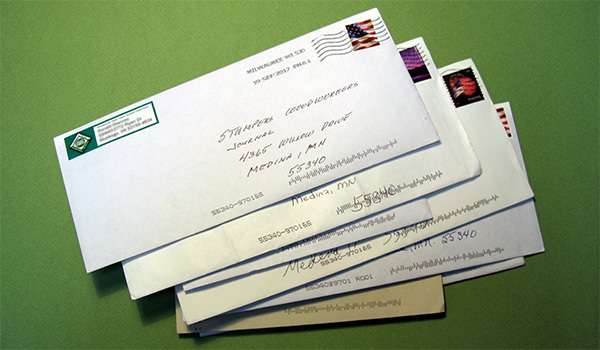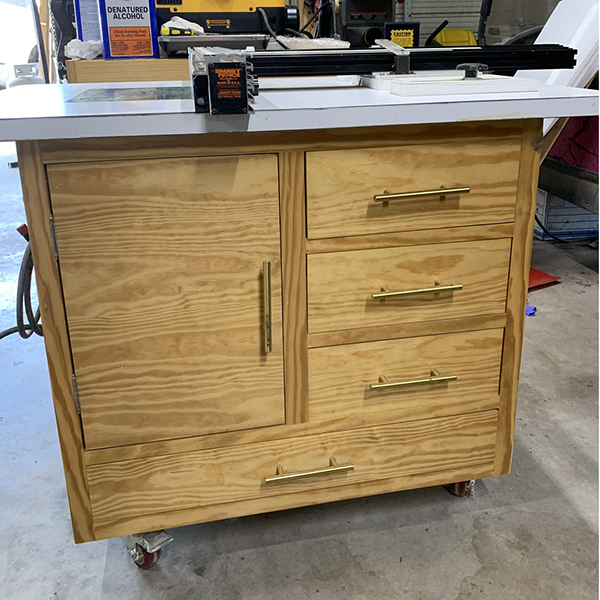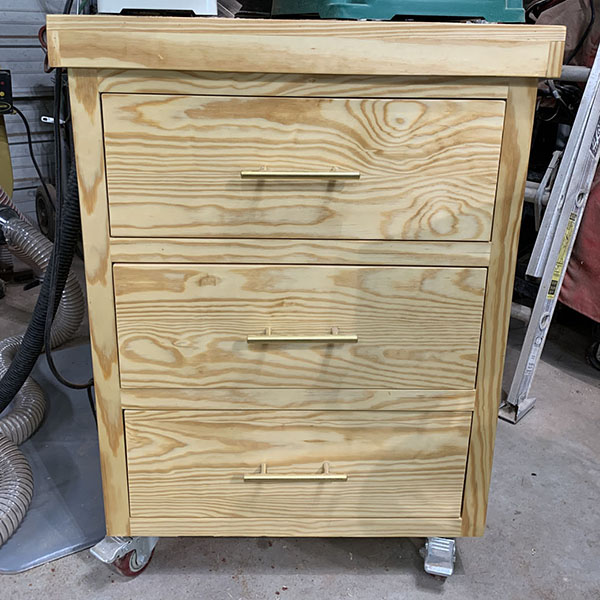
Several readers answer Rob’s request from last week about why you choose pine for projects and how you use it. – Editor
“Years ago (25 or so), I was able to get clear, straight-grain pine, sometimes in 8/4. It looked very much like fir. I made tables and desks from it. It was beautiful stuff. But now it’s impossible to find, at least where I live (Wisconsin). The big pine trees have been harvested and not replaced. Instead, I use soft maple more than anything else. It’s readily available, inexpensive, easy to work and beautiful. It pairs nicely with walnut or mahogany accents.” – Alan Gesler


“Funny you should ask about pine. I just got back from the lumberyard with a sheet of 3/4″ BC yellow pine plywood and a couple of 1 x 6 clear pine boards to build a small cabinet and fold-down outfeed for my table saw. I’ve built all of my shop cabinets out of it. It’s cheap, I can slap them together when I’m bored, and with a couple of coats of oil-based polyurethane and cheap hardware, they look quite nice. Here are photos of two of them (above): a router table and a cabinet for sanding stuff. Everything is on wheels, as I slowly convert my farm shop from equipment maintenance and metal fabrication to woodworking — my first love. I’ve often been asked why I finish them, and my usual answer is to honor the tree that died so I could make the cabinet. (And by the way, I make everything else from hardwood.)” – Mike Galloway
“I like the contrast between red oak legs and a pine top, finished natural. I used this combination for some small side tables that I gave away to family.” – Rich Doherty
“Why do I use pine? These days: BUDGET!” – Willinda Willoughby
“I use pine only for rough construction. I hate the smell and don’t like the pitch getting on my saw blades. In a new house I have inherited, there’s a study paneled with knotty pine, and I’m thinking about ripping it out and putting in walnut from a tree I felled and milled two years ago!” – Clayton Fant
“I suspect the apparent popularity of pine has to do with the wide scope of what each of us defines as ‘woodworking.’ For some, it’s museum-quality antique reproductions made with fine hardwoods, exotic veneers and a French polish finish. But sometimes it’s a picnic table and benches for the patio or deck, made with home center 2x material. Or the ‘woodworking project’ could be building the deck itself or a new garden shed. It’s not so much a ‘species preference’ but what’s best, aesthetically and economically, for the type of project.” – Henry Burks
“Pine is my primary choice because of availability and price. We have no lumber mills, one contractor’s yard and a Home Depot. Our Home Depot carries a smattering of oak, a tiny bit of poplar and a bit of cherry. No other hardwoods. And those few are incredibly expensive. I’m not surprised that pine was number two. If your survey would have been limited to the West, it probably would have been number one. In northern Nevada (Elko/Spring Creek), I know without a doubt it would have been, but not really by choice.” – Dan Romans
“I never thought of pine as a fine building material until I found some very clear, very even pine at, of all places, one of those hardware superstores. I used it to make some keepsake boxes for friends and family. Yes, pine is soft and doesn’t wear well. But items like this don’t get hard use, and the milky color and even grain are really nice to look at.” – Phil Gilstrap
“(Based on your survey findings) I’m surprised by how much oak is used — it’s so last century. For many projects I am a cherry, maple and walnut person, but pine is my go-to for bookcases and many a table. Let’s face it: pine has been used for hundreds of years, and most antiques hundreds of years old, both here and throughout Europe, were all made of pine.” – Rick Smith





